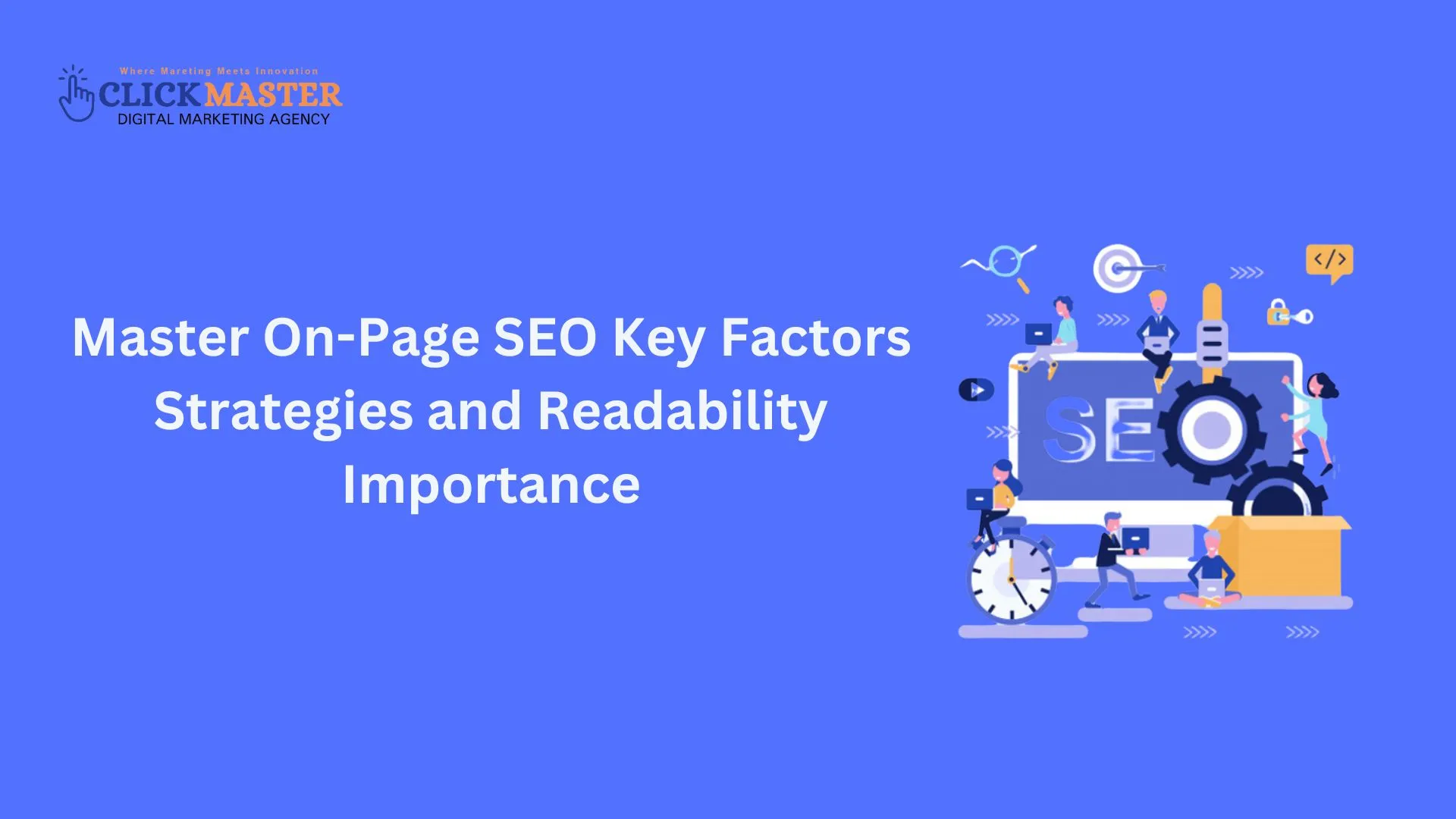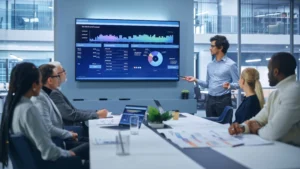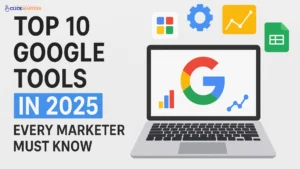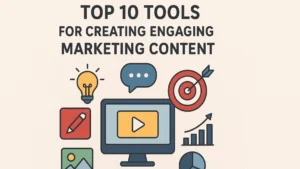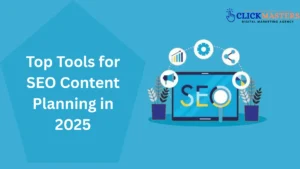In the digital marketing landscape, on page SEO is a cornerstone strategy that ensures your website ranks well in search engine results pages (SERPs). By optimizing key elements on your website, you can drive organic traffic, enhance user experience, and achieve greater online visibility. It involves a meticulous approach to improving the content, structure, and technical aspects of each page, ensuring they align with search engine algorithms and user expectations. From creating keyword-rich, high-quality content to refining HTML elements such as meta tags, headers, and alt attributes, on-page SEO builds a solid foundation for search engine success.
What Is On Page SEO?
On page SEO, also known as on-site SEO, involves optimizing individual web page elements to improve search engine rankings and attract targeted traffic. Key components include:
- Meta Tags: Optimize titles and descriptions with relevant keywords to improve click-through rates.
- H1 Tags: Use structured headings to define page hierarchy and improve readability.
- Site Map: Create an XML sitemap for better search engine indexing.
- Keyword Density: Maintain natural keyword usage at 1-2% without overstuffing.
- Alt Tags: Add descriptive text to images to improve accessibility and SEO.
- Page Loading Speed: Enhance speed by optimizing images, minimizing code, and using CDNs.
- Keyword Placement: Strategically place keywords in titles, headers, and throughout content.
Effective on-page SEO aligns technical optimization with user-focused content, driving traffic and improving online visibility.
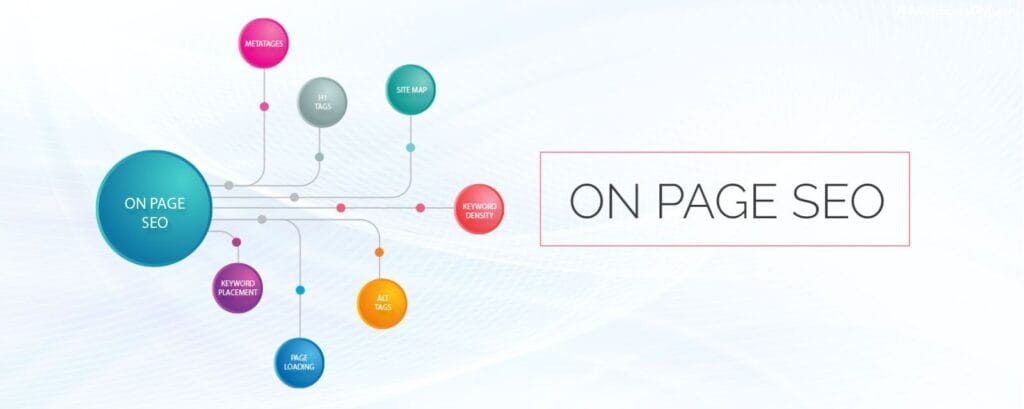
Why Is On-Page SEO Important?
Improved Search Rankings
Achieve superior online visibility with improved search rankings! Optimize your website for better performance, attract more organic traffic, and stay ahead of the competition. Our proven strategies ensure higher rankings, increased engagement, and sustained growth for your digital presence.
Enhanced User Experience
Deliver an enhanced user experience with optimized on-page SEO! Improve navigation, boost load speeds, and ensure mobile responsiveness to create a seamless journey for users. Incorporate keyword-rich content, meta tags, and structured data for better search visibility. Engage your audience while driving traffic and conversions effortlessly.
Higher Click-Through Rates (CTR)
Boost higher click-through rates (CTR) with compelling strategies! Craft attention-grabbing headlines, meta descriptions, and rich snippets that entice users to click. Optimize CTAs and visuals to align with user intent and drive engagement. Increased CTR means more traffic, better rankings, and greater ROI.
Content Relevance
Ensure content relevance to captivate your audience and improve search rankings! Create tailored, high-quality content that addresses user needs and aligns with search intent. Incorporate targeted keywords naturally while maintaining value and readability. Relevant content boosts engagement, builds trust, and drives consistent traffic.
Readability Importance in On-Page SEO
Readability is a cornerstone of effective on-page SEO. It ensures that content is accessible, engaging, and understandable for both human readers and search engines. Here’s why readability is crucial for on-page SEO:
Enhances User Engagement
Readable content keeps users on the page longer, improves session duration, and reduces bounce rates. Clear and concise text helps users quickly find and understand the information they seek, leading to better interaction with your site.
Supports Search Engine Optimization (SEO)
Search engines prioritize content that meets user intent and is easy to understand. Readability aids in indexing, context interpretation, and ranking. Highly readable content is also more likely to appear in featured snippets.
Increases Content Shareability
Content that is engaging and easy to digest encourages users to share it across social platforms. Shareable content reaches a broader audience, amplifying your site’s visibility and driving organic traffic.
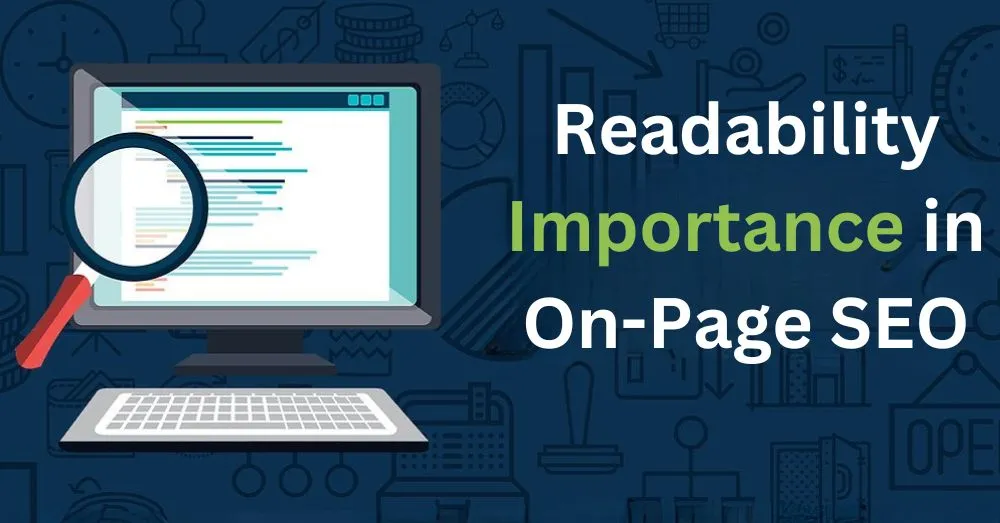
Key On Page SEO Factors
On-page SEO involves optimizing various elements on a website to improve its visibility and relevance to search engines and users. Below are the key factors that play a critical role in achieving on-page SEO success:
In-Depth Keyword Research
- Target Audience Alignment: Identify keywords that resonate with your audience’s search intent.
- Primary and Secondary Keywords: Optimize content with a mix of primary and related keywords for semantic depth.
- Long-Tail Keywords: Use long-tail keywords to target niche queries and improve rankings for less competitive terms.
Header Tags (H1, H2, H3, etc.)
- Content Structure: Use header tags to create a logical hierarchy, improving readability and content flow.
- Keyword Placement: Include keywords naturally in headers to signal content relevance to search engines.
- Enhanced Skimmability: Proper header usage allows users and search engines to easily scan content for key points.
URL Structure
- Descriptive URLs: Use short, descriptive URLs that include target keywords.
- Avoid Unnecessary Parameters: Keep URLs clean and free of excessive query strings or numbers.
- Consistency: Ensure a consistent URL structure across your site for better navigation and indexing.
Title Tags
- Keyword Optimization: Place primary keywords near the beginning of the title tag.
- Character Limit: Keep title tags under 60 characters to avoid truncation in search results.
- Engaging Phrasing: Use compelling and descriptive language to increase click-through rates (CTR).
Image Optimization and ALT Text
- File Names: Use descriptive, keyword-rich file names for images (e.g.,
on-page-seo-tips.jpg). - ALT Text: Add concise, keyword-focused ALT text to describe images for accessibility and SEO.
- Compression: Optimize image sizes to improve site load speed without compromising quality.
Internal Linking
- Content Connections: Use internal links to connect related pages, improving navigation and user experience.
- Anchor Text: Use descriptive anchor text that includes keywords where appropriate.
- Crawl Efficiency: Help search engines discover and index your pages more effectively.

On-Page Optimization Strategies
Write for Humans, Optimize for Search Engines
- Create Quality, Keyword-Rich Content: Write engaging, valuable content for readers while naturally integrating relevant keywords to enhance discoverability.
- Optimize Structure for SEO: Use clear headers, short paragraphs, and bulleted lists to improve readability and keyword placement.
- Focus on User Intent and Experience: Align content with search intent, ensuring fast loading, mobile optimization, and helpful links.
Use Structured Data
- Implement Schema Markup: Add structured data to help search engines understand your content, enhancing visibility in rich results.
- Highlight Key Information: Use structured data to emphasize reviews, FAQs, events, or product details for better SERP presentation.
- Boost Click-Through Rates: Structured data improves search snippets, making them more attractive and informative to users.
Optimize Images
- Compress for Faster Loading: Use tools to reduce image file sizes without compromising quality, improving page speed and user experience.
- Use Descriptive File Names and Alt Text: Optimize images with keyword-rich file names and alt text to improve search engine visibility and accessibility.
- Choose the Right Formats: Utilize modern formats like WebP or JPEG for efficiency and quality, ensuring compatibility across devices.
Improve Page Speed
- Enable Caching: Use browser caching and CDN services to reduce load times for returning visitors.
- Minimize Code and Files: Compress CSS, JavaScript, and HTML, and remove unnecessary elements to streamline performance.
- Optimize Server Response: Use fast hosting, reduce redirects, and implement Gzip compression to enhance server efficiency.
Focus on User Experience (UX)
- Ensure Mobile-Friendliness: Design responsive layouts that adapt seamlessly to all devices for a smooth user experience.
- Simplify Navigation: Use clear menus and intuitive layouts to help users find information quickly and easily.
- Prioritize Speed and Accessibility: Ensure fast load times and accessible content to cater to diverse user needs and preferences.

How Our Agency Boosts Your Website Traffic
SEO That Brings Long-Term Success
Transform Your Traffic into Loyal Customers
SEO Strategies for Sustainable Growth
Difference Between On-Page and Off-Page SEO
On Page SEO and Off Page SEO are two crucial aspects of optimizing your website for better search engine rankings. Here’s a quick comparison:
On Page SEO
On Page SEO focuses on optimizing elements within your website to improve its visibility and user experience. Key aspects include:
- Content Optimization: Creating high-quality, keyword-rich, and relevant content.
- Meta Tags: Writing effective meta titles and descriptions.
- URL Structure: Using SEO-friendly URLs.
- Internal Linking: Connecting relevant pages within your site.
- Page Speed and Mobile-Friendliness: Enhancing user experience with fast loading and responsive design.
Off Page SEO
Off Page SEO involves strategies performed outside your website to boost its authority and credibility. Key tactics include:
- Backlink Building: Earning quality links from other reputable websites.
- Social Media Marketing: Promoting your content on social platforms to drive engagement.
- Guest Blogging: Writing for other blogs to gain exposure and links.
- Brand Mentions: Building trust through mentions on forums, reviews, or industry-related platforms.
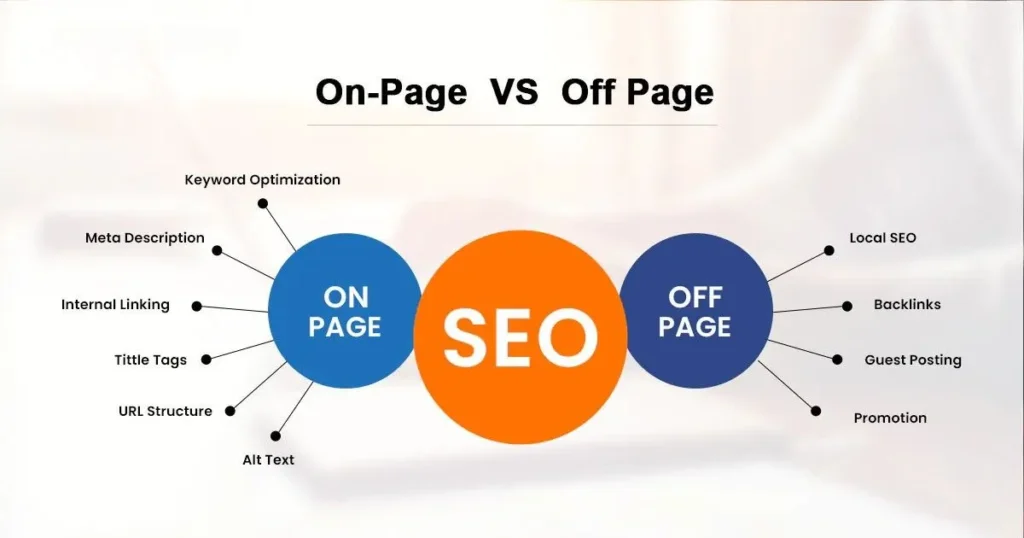
FAQs
What are the top on page SEO factors?
Top on page SEO factors includes high-quality, keyword-optimized content that matches search intent, ensuring relevance and value for users. Proper use of meta tags (title, description, and headers) enhances visibility and click-through rates. Additionally, technical optimizations like fast page loading speed, mobile responsiveness, and internal linking improve user experience and search engine crawlability.
Why is content quality important for on-page SEO?
Content quality is crucial for on-page SEO because it ensures your page meets user intent, providing value and relevance that keeps visitors engaged. High-quality content helps search engines understand your page’s purpose, boosting rankings. It also encourages longer dwell times, lower bounce rates, and more backlinks, signaling authority and credibility.
How does internal linking affect SEO?
Internal linking enhances SEO by helping search engines crawl and index your site more effectively, improving overall site structure. It distributes link equity across pages, boosting the ranking potential of important content. Additionally, internal links guide users to related information, increasing engagement and reducing bounce rates.
Can I do on-page SEO without technical expertise?
Yes, you can do on-page SEO without technical expertise by focusing on content optimization, such as using relevant keywords, crafting compelling meta tags, and formatting headers properly. User-friendly tools and platforms simplify tasks like improving readability and adding internal links. While advanced technical skills can help, many aspects of on-page SEO are accessible with basic knowledge and tools.

